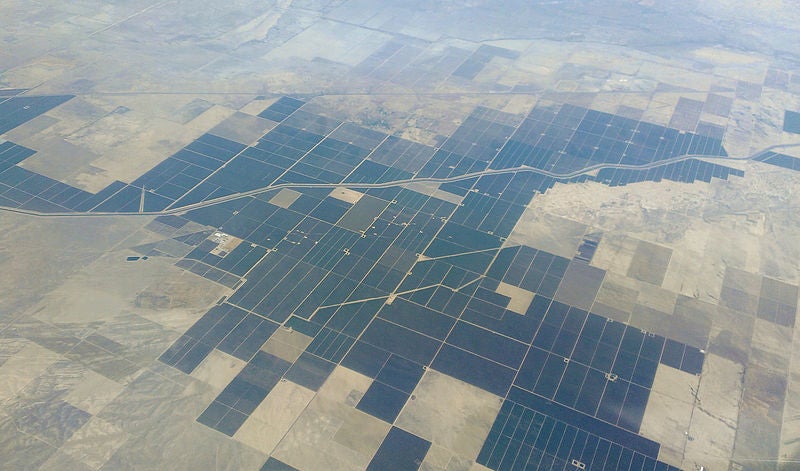Groundwater plans are due in California, but the hard work is just getting started
January 31 is a big day for California water. It’s the day when 19 critically overdrafted groundwater basins must submit plans to the state for how they will bring their groundwater demand in line with available supplies over the next 20 years.
This deadline was set by the state’s most sweeping water law change in a century – the Sustainable Groundwater Management Act (SGMA). SGMA, passed during the last major drought, was designed to put an end to groundwater overpumping and ensure there’s enough water for people, the economy and wildlife in California for generations to come.
SGMA is taking water managers and users into uncharted territory. Since its passage, California water managers have made important progress, creating new groundwater agencies and learning more about their local groundwater supplies and demands. These are important first steps toward sustainability, but SGMA requires a deeper paradigm shift to succeed.
Here are four actions that will help drive this massive shift and move California closer to truly balancing groundwater supply and demand.
1. Recognize water scarcity and tackle the tough questions.
Many California farmers have a long history of farming – successfully following in the footsteps and using the same methods of generations before them. While farmers faced droughts in the past, today’s droughts are more intense, temperatures are higher, and California has a much larger population, increasing demand for food and water.
These challenges mean California water management is far more complex than it was a century ago and consequently requires new strategies and solutions that recognize water is a finite resource.
As a result of SGMA, many local agencies have taken an important first step toward developing new solutions: They have launched (and in some cases completed) new studies and analyses to gain a better understanding of how much groundwater they have, how much is being used and how much they could replenish through recharge projects.
However, the vast majority of groundwater agencies still need to move beyond the data and take harder next steps. This includes considering more novel strategies to tackle thorny questions, such as who gets how much water.

2. Boost creativity and dedicated funding.
So far, only a handful of groundwater agencies are thinking more creatively and developing innovative solutions.
One monitoring innovation comes from the Santa Cruz Mid-County Groundwater Agency, which recently used a helicopter towing an electromagnetic sensor to track the barrier between freshwater and saltwater under the ocean floor to better understand saltwater intrusion.
Another example is from the Rosedale-Rio Bravo Groundwater Storage District in Kern County — ground zero for groundwater overdraft. In partnership with EDF, Rosedale is using open-source software to develop a new online accounting and trading platform to enable landowners to more accurately track and flexibly manage their water use.
Innovating around groundwater management comes with a price tag. Fortunately, the Newsom administration recognizes this and has proposed $30 million for SGMA implementation plus nearly $10 million for water agency staff in its 2020-2021 budget. Newsom’s climate bond proposal also includes $395 million for SGMA implementation, which would provide a much-needed boost to SGMA innovations if approved by the California Legislature and voters.
3. Increase collaboration to maximize success.
Developing new groundwater management solutions requires greater collaboration to increase the chances of success. Rosedale and Santa Cruz Mid-Country also have been among the agencies that have taken the lead on building such relationships.
Rosedale, for instance, has held in-person workshops and webinars to receive direct, valuable feedback to develop tools that best meet landowners’ needs.
To address the impacts of groundwater pumping on rivers and streams, the Santa Cruz Mid-County Agency created a surface water working group that included representatives from more than a dozen organizations, including state and federal fish and wildlife agencies, city and county governments, water managers and nonprofits. Tapping that group’s expertise, the agency came up with a new strategy to monitor and minimize impacts on rivers and streams, which aligned closely with an approach outlined in an EDF working paper. SGMA is helping increase California's groundwater resilience but we still need a paradigm shift to balance our water supplies. Share on X
4. Engage diverse water users.
During the last drought, groundwater overpumping caused a number of small disadvantaged rural communities to completely lose access to water for drinking, washing dishes, taking showers and flushing toilets. Not surprisingly, this created frustration and distrust.
To avoid future scenarios like this, SGMA specifically requires local groundwater sustainability agencies to consider the interests of disadvantaged communities, whose voices have frequently been ignored in water decision-making.
Unfortunately, the Community Water Center and Clean Water Action recently asserted that local groundwater agencies have fallen short in considering the impacts of their sustainability plans on these communities — something agencies should seek to remedy quickly.
What comes next?
As the state begins to review groundwater sustainability plans, it remains to be seen what the standard will be for determining whether plans have complied with the rules and regulations set forth under SGMA. The state has two years to review the sustainability plans, but local groundwater agencies are expected to move forward on implementation while awaiting state approval.
I hope that local water agencies and the communities they represent will embrace the multi-faceted paradigm shift that will be required to make SGMA successful. I also hope the state will be diligent in enforcing the spirt of SGMA, because it is crucial to creating a more resilient water system for California.












2 Comments
Thanks Dr. Babbitt, very good points!
Thank you! This kind of work for a better life in California makes us proud!